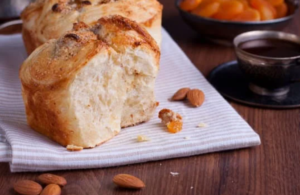Naan Vs Garlic Naan: Which One Will Prevail?
What To Know
- While garlic naan is a delicious option on its own, it can also be further enhanced with toppings such as grated cheese, chopped onions, or even a drizzle of olive oil.
- So, next time you’re craving a delicious and satisfying bread, consider the subtle differences between naan and garlic naan and make an informed decision that will elevate your meal to new heights.
- Yes, you can make naan or garlic naan at home using simple ingredients and a tandoor oven or a cast-iron skillet.
When it comes to Indian cuisine, naan is an indispensable bread that enhances any meal. With its soft, pillowy texture and versatility, naan is a staple in many households and restaurants. However, when the garlic craving strikes, the choice between naan and garlic naan becomes a tantalizing dilemma. In this blog post, we’ll delve into the unique characteristics of each flatbread and guide you in making the ultimate decision.
A Tale of Two Textures:
Naan: Naan is characterized by its soft and chewy texture. The dough is made with a combination of refined flour, yogurt, and water, resulting in a bread that is both pliable and slightly stretchy.
Garlic Naan: Garlic naan elevates the classic naan by incorporating minced garlic into the dough. This addition creates a subtle garlicky flavor and a slightly crispy exterior, making it a more flavorful and aromatic option.
The Flavor Factor:
Naan: Naan’s neutral flavor allows it to complement a wide range of dishes, from spicy curries to mild lentils. Its mildness makes it a great choice for those who prefer a bread that won’t overpower the main course.
Garlic Naan: Garlic naan‘s distinct garlic flavor adds an extra layer of richness to any meal. It pairs particularly well with dishes that have a bold flavor profile, such as tikka masala or vindaloo.
Customization Options:
Naan: Naan’s versatility extends to its ability to be customized. Plain naan is the most common, but it can also be topped with butter, ghee, or herbs like coriander or cilantro.
Garlic Naan: While garlic naan is a delicious option on its own, it can also be further enhanced with toppings such as grated cheese, chopped onions, or even a drizzle of olive oil.
Health Considerations:
Naan: Naan is generally considered a healthier option than white bread due to its use of yogurt and whole wheat flour. However, it is still a high-carbohydrate food and should be consumed in moderation.
Garlic Naan: Garlic naan has slightly higher calorie and fat content than plain naan due to the addition of garlic and butter. It is important to consider portion size when enjoying this flavorful treat.
The Verdict:
The choice between naan and garlic naan ultimately depends on your personal preferences. If you prefer a mild and versatile bread, plain naan is an excellent option. However, if you crave a more flavorful and aromatic experience, garlic naan is the way to go.
Key Points:
Whether you choose naan or garlic naan, you’re in for a treat. These flatbreads are a testament to the culinary expertise of Indian cuisine. So, next time you’re craving a delicious and satisfying bread, consider the subtle differences between naan and garlic naan and make an informed decision that will elevate your meal to new heights.
Popular Questions
Q: Which bread is better for dipping in sauces?
A: Both naan and garlic naan are great for dipping, but garlic naan’s crispy texture and garlicky flavor make it a particularly good choice for pairing with rich and flavorful sauces.
Q: Can I make naan or garlic naan at home?
A: Yes, you can make naan or garlic naan at home using simple ingredients and a tandoor oven or a cast-iron skillet.
Q: What is the best way to store naan or garlic naan?
A: Naan and garlic naan are best stored in an airtight container at room temperature for up to 2 days. They can also be frozen for up to 2 months.
